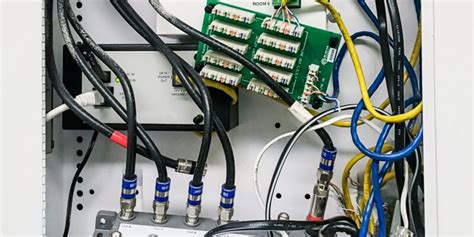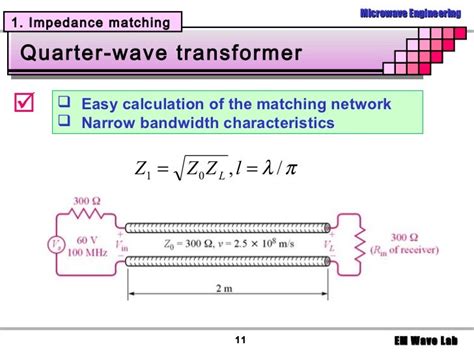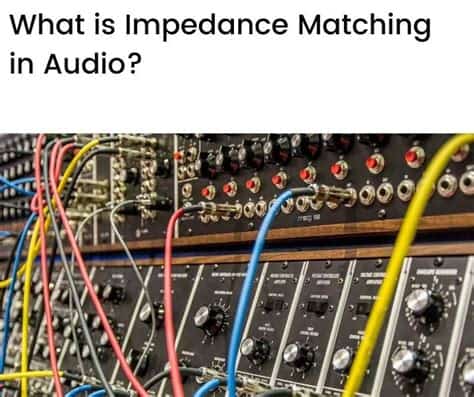Introduction to Impedance Matching
Impedance matching is a crucial concept in electrical engineering, particularly in the design of high-frequency circuits and systems. It involves the process of matching the impedance of a load to the impedance of a source to maximize power transfer and minimize signal reflections. There are two primary approaches to impedance matching: reflectionless matching and conjugate matching. While these two methods may seem contradictory at first glance, understanding their fundamental principles and applications can help resolve this apparent contradiction.
What is Impedance?
Before delving into the specifics of impedance matching, it is essential to understand the concept of impedance itself. Impedance is a measure of the opposition that a circuit presents to the flow of alternating current (AC) at a given frequency. It is a complex quantity that consists of both resistance and reactance.
Resistance is the real part of impedance and represents the opposition to the flow of current due to the dissipation of energy in the form of heat. Reactance, on the other hand, is the imaginary part of impedance and represents the opposition to the flow of current due to the storage of energy in magnetic or electric fields.
The impedance of a circuit can be expressed as:
Z = R + jX
where:
– Z is the complex impedance
– R is the resistance
– X is the reactance
– j is the imaginary unit (square root of -1)
Importance of Impedance Matching
Impedance matching is essential in high-frequency circuits and systems for several reasons:
-
Maximum Power Transfer: When the impedance of a load is matched to the impedance of a source, maximum power transfer occurs from the source to the load. This is particularly important in power amplifiers, where the goal is to deliver as much power as possible to the load (e.g., an antenna).
-
Minimizing Signal Reflections: When there is an impedance mismatch between a source and a load, a portion of the signal is reflected back to the source. These reflections can cause standing waves, which can lead to signal distortion, power loss, and even damage to the source or load. By matching the impedances, signal reflections can be minimized or eliminated.
-
Improving Signal Integrity: Impedance matching helps maintain the integrity of the signal as it propagates through a system. Mismatches can cause signal distortion, which can degrade the quality of the transmitted or received signal.
Reflectionless Matching
Reflectionless matching, also known as non-reflecting matching or absorptive matching, is a technique used to match the impedance of a load to the impedance of a source while minimizing or eliminating signal reflections. In this approach, the matching network is designed to absorb any reflected power, preventing it from reaching the source.
Principles of Reflectionless Matching
The key principle behind reflectionless matching is the use of resistive elements in the matching network to dissipate the reflected power. By strategically placing resistors in the matching network, any signal reflections from the load can be absorbed, preventing them from propagating back to the source.
One common approach to reflectionless matching is the use of a resistive pi network. In this configuration, the matching network consists of two shunt resistors and one series resistor, forming a pi-shaped circuit. The values of these resistors are chosen to match the impedance of the load to the impedance of the source while also providing a path for the reflected power to be dissipated.
| Component | Value |
|---|---|
| Shunt Resistor 1 | R1 |
| Series Resistor | R2 |
| Shunt Resistor 2 | R3 |
The values of R1, R2, and R3 are determined based on the source and load impedances, as well as the desired frequency range of operation.
Advantages of Reflectionless Matching
Reflectionless matching offers several advantages over other impedance matching techniques:
-
Reduced Signal Reflections: By absorbing the reflected power, reflectionless matching minimizes or eliminates signal reflections, improving signal integrity and reducing the risk of standing waves.
-
Broadband Operation: Reflectionless matching networks can be designed to operate over a wide frequency range, making them suitable for broadband applications.
-
Improved Stability: By preventing signal reflections from reaching the source, reflectionless matching can improve the stability of the system, particularly in high-gain amplifiers where reflections can cause oscillations.
Disadvantages of Reflectionless Matching
Despite its advantages, reflectionless matching also has some drawbacks:
-
Power Loss: The resistive elements in the matching network dissipate some of the power, leading to a reduction in overall power efficiency. This can be a concern in power-sensitive applications.
-
Increased Complexity: Reflectionless matching networks often require more components than other matching techniques, which can increase the complexity and cost of the system.

Conjugate Matching
Conjugate matching is another approach to impedance matching that focuses on maximizing power transfer from the source to the load. In this technique, the impedance of the load is matched to the complex conjugate of the source impedance.
Principles of Conjugate Matching
The basic principle of conjugate matching is that maximum power transfer occurs when the impedance of the load is equal to the complex conjugate of the source impedance. In other words, the real parts of the impedances are equal, and the imaginary parts are equal in magnitude but opposite in sign.
Mathematically, if the source impedance is given by:
Zs = Rs + jXs
then the load impedance for conjugate matching should be:
Zl = Rs – jXs
where:
– Zs is the source impedance
– Rs is the real part of the source impedance
– Xs is the imaginary part of the source impedance
– Zl is the load impedance
By matching the load impedance to the complex conjugate of the source impedance, maximum power transfer is achieved, and signal reflections are minimized.
Advantages of Conjugate Matching
Conjugate matching offers several advantages:
-
Maximum Power Transfer: By matching the load impedance to the complex conjugate of the source impedance, conjugate matching ensures that maximum power is transferred from the source to the load.
-
Simplified Design: Compared to reflectionless matching, conjugate matching networks often require fewer components, making the design simpler and more cost-effective.
-
Improved Efficiency: Since conjugate matching maximizes power transfer, it can lead to improved overall power efficiency in the system.
Disadvantages of Conjugate Matching
Conjugate matching also has some limitations:
-
Narrowband Operation: Conjugate matching is typically designed for a specific frequency or a narrow frequency range. If the operating frequency deviates from the designed frequency, the matching condition may no longer be satisfied, leading to reduced power transfer and increased signal reflections.
-
Sensitivity to Load Variations: Conjugate matching is sensitive to changes in the load impedance. If the load impedance varies due to environmental factors or changes in the operating conditions, the matching condition may be disrupted, affecting the performance of the system.

Resolving the Apparent Contradiction
At first glance, reflectionless matching and conjugate matching may seem contradictory. Reflectionless matching focuses on minimizing signal reflections by absorbing the reflected power, while conjugate matching aims to maximize power transfer by matching the load impedance to the complex conjugate of the source impedance.
However, these two approaches are not mutually exclusive and can be used in combination to achieve optimal performance in a given application. The choice between reflectionless matching and conjugate matching depends on the specific requirements of the system, such as the desired frequency range of operation, the sensitivity to load variations, and the acceptable level of power loss.
In some cases, a hybrid approach can be employed, where a reflectionless matching network is used to provide broadband impedance matching and minimize signal reflections, while a conjugate matching network is used at the final stage to maximize power transfer to the load.
It is also important to note that the apparent contradiction between reflectionless matching and conjugate matching arises from the simplified models used to describe these techniques. In practice, the impedance of a source and a load are not purely resistive or reactive but have both real and imaginary components. Therefore, a more comprehensive analysis that takes into account the complete impedance characteristics of the system is necessary to determine the optimal matching approach.

Conclusion
Impedance matching is a critical aspect of high-frequency circuit and system design, and the choice between reflectionless matching and conjugate matching depends on the specific requirements of the application. While these two techniques may seem contradictory at first, understanding their principles and limitations can help resolve this apparent contradiction.
Reflectionless matching focuses on minimizing signal reflections by absorbing the reflected power, while conjugate matching aims to maximize power transfer by matching the load impedance to the complex conjugate of the source impedance. Both techniques have their advantages and disadvantages, and the optimal approach depends on factors such as the desired frequency range of operation, the sensitivity to load variations, and the acceptable level of power loss.
By considering the complete impedance characteristics of the system and employing a comprehensive analysis, engineers can determine the most suitable impedance matching technique or combination of techniques to achieve the desired performance in a given application.
Frequently Asked Questions
-
What is the main difference between reflectionless matching and conjugate matching?
Reflectionless matching focuses on minimizing signal reflections by absorbing the reflected power, while conjugate matching aims to maximize power transfer by matching the load impedance to the complex conjugate of the source impedance. -
Can reflectionless matching and conjugate matching be used together?
Yes, in some cases, a hybrid approach can be employed, where a reflectionless matching network is used to provide broadband impedance matching and minimize signal reflections, while a conjugate matching network is used at the final stage to maximize power transfer to the load. -
Which matching technique is better for broadband applications?
Reflectionless matching is generally better suited for broadband applications, as it can be designed to operate over a wide frequency range. Conjugate matching, on the other hand, is typically designed for a specific frequency or a narrow frequency range. -
How does the sensitivity to load variations differ between reflectionless matching and conjugate matching?
Conjugate matching is more sensitive to changes in the load impedance compared to reflectionless matching. If the load impedance varies due to environmental factors or changes in the operating conditions, the matching condition in conjugate matching may be disrupted, affecting the performance of the system. -
Is it possible to achieve perfect impedance matching in practice?
Perfect impedance matching is challenging to achieve in practice due to the presence of parasitic elements, component tolerances, and other factors that can affect the impedance characteristics of the system. However, by employing appropriate matching techniques and careful design, it is possible to achieve a high degree of impedance matching that meets the requirements of the application.

No responses yet